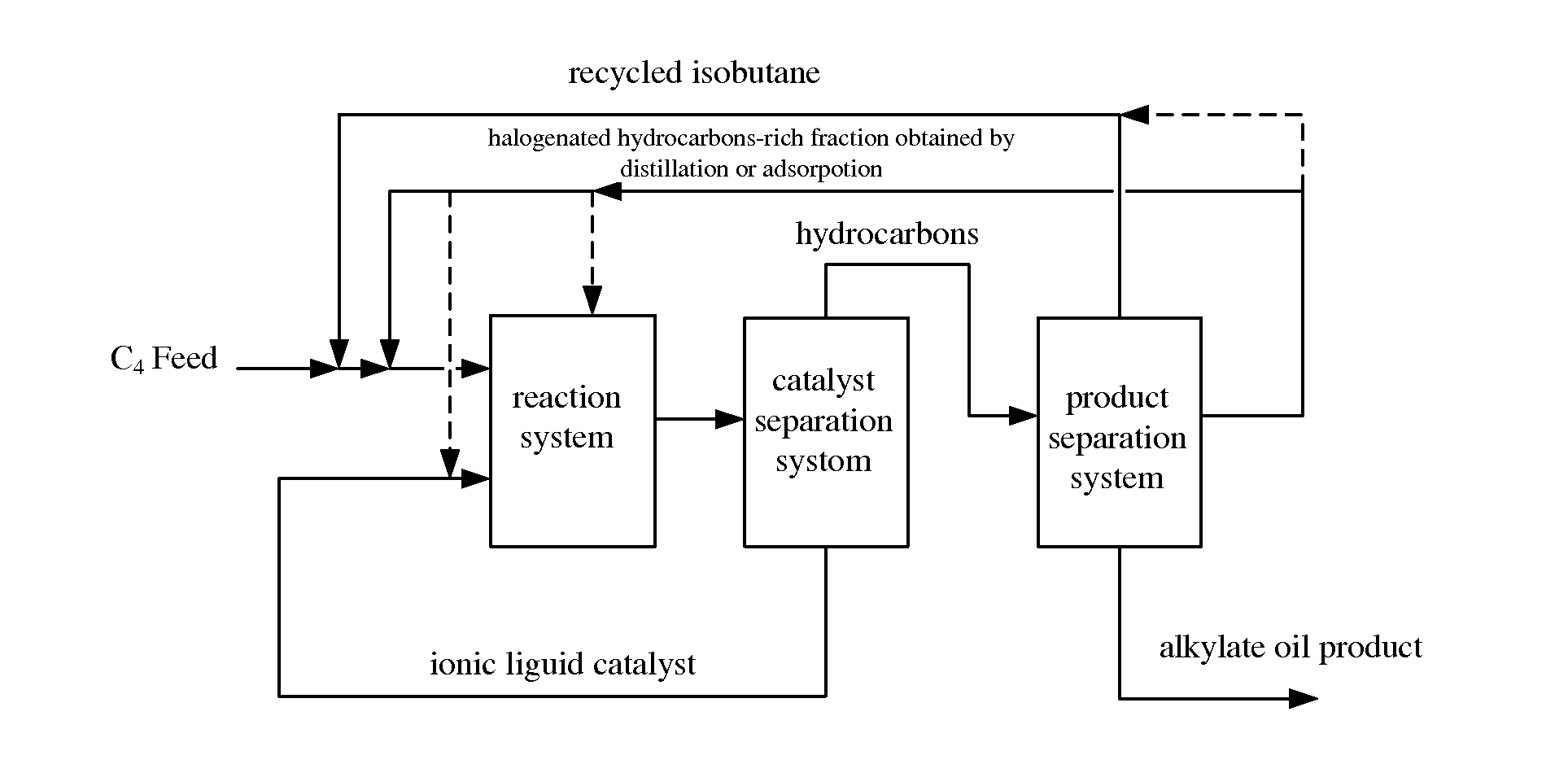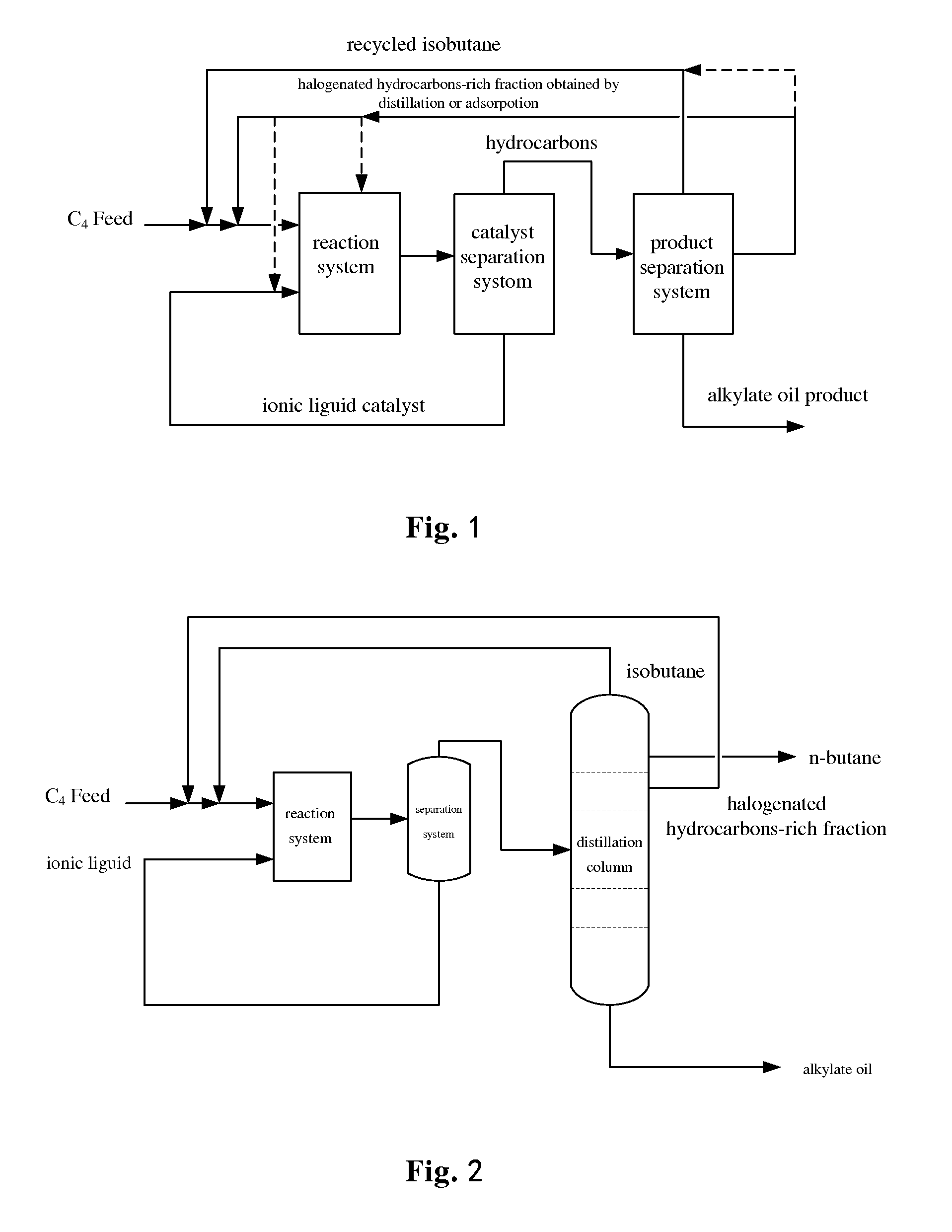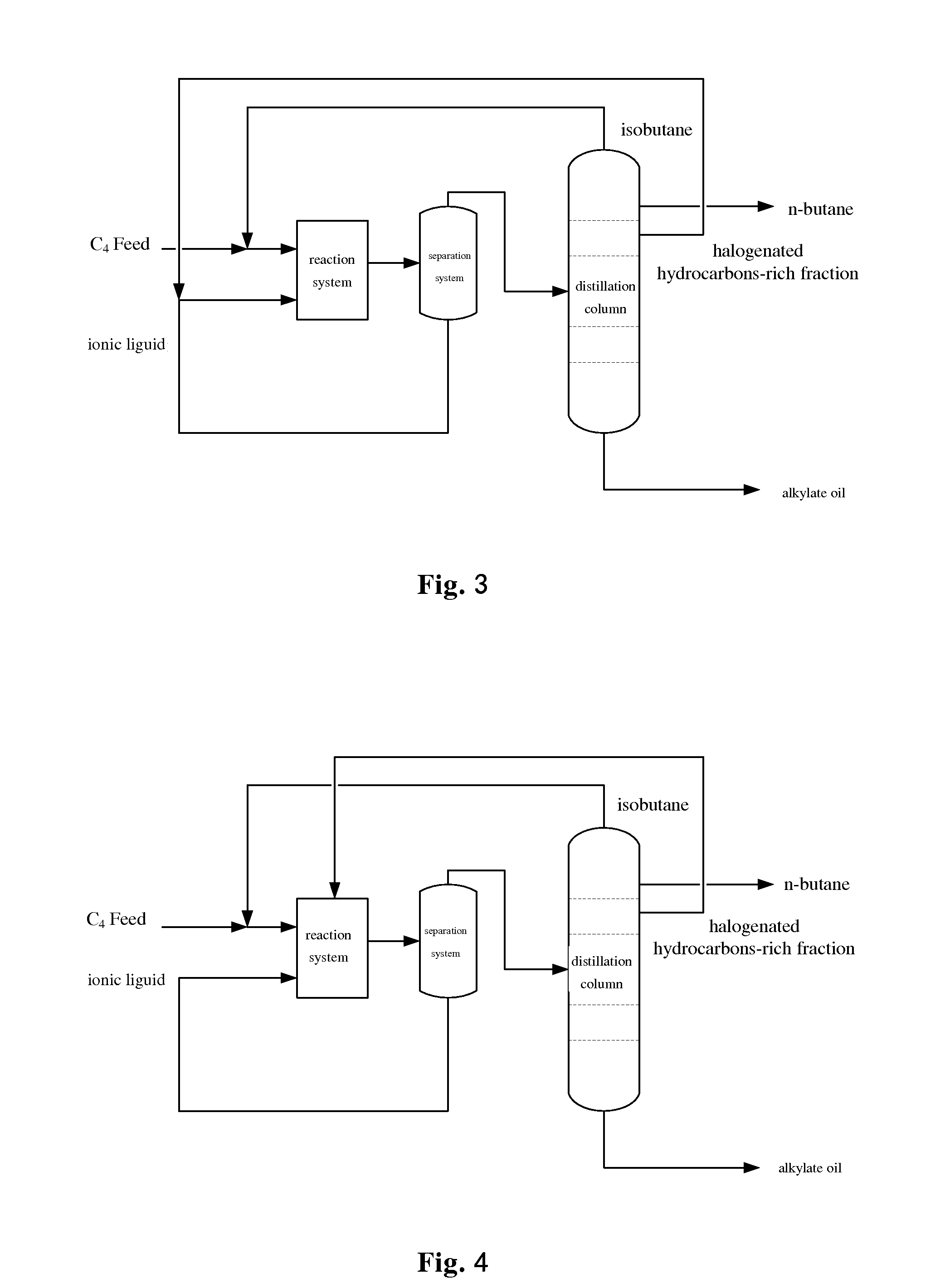Alkylation method using ionic liquid as catalyst
- Summary
- Abstract
- Description
- Claims
- Application Information
AI Technical Summary
Benefits of technology
Problems solved by technology
Method used
Image
Examples
example 1
[0043]Catalytic alkylation reaction of isobutane is carried out in a continuous apparatus using the same acidic ionic liquid as catalyst as that in the comparative example. The inventory of the ionic liquid is of 200 g. The reaction pressure is 0.5 MPa and the reaction temperature is 30. The feed is the same mixture of isobutane and 2-butene with a molar ratio between alkane and alkene of 20:1 as that in the comparative example. Mixing 200 g C5 to C7 fraction obtained in the comparative example with 100 kg feed, conducting the alkylation reaction continuously, collecting the alkylate oil products through separating out isobutane and catalyst (the same in the following examples), and analyzing the composition thereof. The results are shown in Table 3.
TABLE 3Life test on catalytic alkylation by ionic liquidProcessed feed,Selectivity of C8g / g ionic liquidButene conversion, %fraction, wt %TMP / DMH20100871440100881560100881580100881510010088151208481131400——
[0044]As can be seen from Table...
example 2
[0046]Catalytic alkylation reaction of isobutane is carried out in a continuous apparatus using the same acidic ionic liquid as catalyst as that in the comparative example. The inventory of the ionic liquid is of 200 g. The reaction pressure is 0.5 MPa and the reaction temperature is 30. The feed is the same mixture of isobutane and 2-butene with a molar ratio between alkane and alkene of 20:1 as that in the comparative example. Mixing 200 g C5 to C7 fraction obtained in the comparative example with 200 g ionic liquid catalyst, and conducting the alkylation reaction continuously to obtain the alkylate oil product and then analyze the composition thereof. The results are shown in Table 4.
TABLE 4Life test on catalytic alkylation by ionic liquidProcessed feed,Selectivity of C8g / g ionic liquidButene conversion, %fraction, wt %TMP / DMH20100871440100871560100891580100891510010088141207982121400——
[0047]As can be seen from Table 4, when the amount of the processed feed is up to 24 kg, i.e. t...
example 3
[0049]Catalytic alkylation reaction of isobutane is carried out in a continuous apparatus using the same acidic ionic liquid as catalyst as that in the comparative example. The inventory of the ionic liquid is of 200 g. The reaction pressure is 0.5 MPa and the reaction temperature is 30. The feed is the same mixture of isobutane and 2-butene with a molar ratio between alkane and alkene of 20:1 as that in the comparative example. The flowrate of the feed is 500 g / h. Introducing C5 to C7 fraction obtained in the comparative example into the reactor directly at a flowrate of 4 g / h, and conducting the alkylation reaction continuously. Separating and collecting the alkylate oil product, and analyzing the composition thereof. The results are shown in Table 5.
TABLE 5Life test on catalytic alkylation by ionic liquidProcessed feed,Selectivity of C8g / g ionic liquidButene conversion, %fraction, wt %TMP / DMH20100861440100881560100881580100881510010088151208984131400——
[0050]As can be seen from Ta...
PUM
| Property | Measurement | Unit |
|---|---|---|
| Fraction | aaaaa | aaaaa |
| Fraction | aaaaa | aaaaa |
| Fraction | aaaaa | aaaaa |
Abstract
Description
Claims
Application Information
 Login to View More
Login to View More - R&D
- Intellectual Property
- Life Sciences
- Materials
- Tech Scout
- Unparalleled Data Quality
- Higher Quality Content
- 60% Fewer Hallucinations
Browse by: Latest US Patents, China's latest patents, Technical Efficacy Thesaurus, Application Domain, Technology Topic, Popular Technical Reports.
© 2025 PatSnap. All rights reserved.Legal|Privacy policy|Modern Slavery Act Transparency Statement|Sitemap|About US| Contact US: help@patsnap.com



